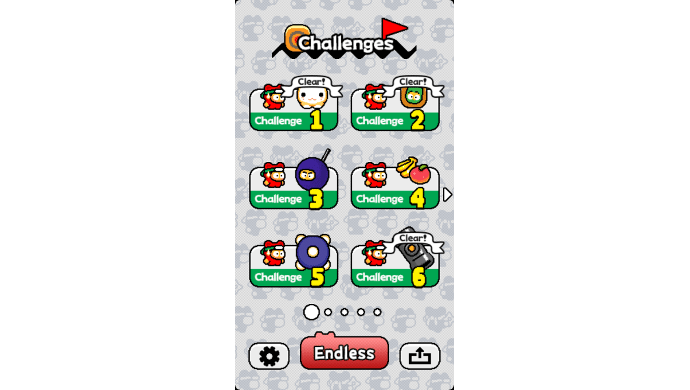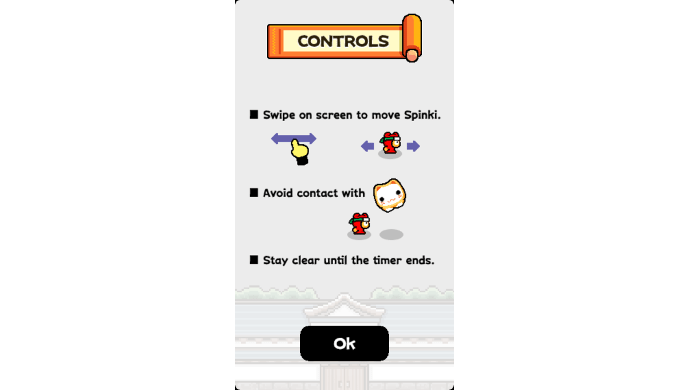Replicating the success of the addictive side-scroller may not be likely, but that does not diminish Ninja Spinki’s qualities

It was a time of wrecked nerves, thumb aches, and sweaty palms. It was a time of wailing and gnashing of teeth. Such were the symptoms of the many entrapped within the lure of Flappy Bird.
Indeed, it would be no exaggeration to say that the infamous mobile game – a simple auto-running side-scroller created by Vietnamese developer Dong Nguyen – took the world by storm and, in its brief existence, proved to be one of the most addictive and tough-as-nails smartphone games ever.
The concept was devilishly simple: Players had to guide a bird through an infinite series of obstacles in the form of green pipes. To control the height of the bird’s flight, players had to continuously tap on their phone’s screen. The bird dies once it hits a pipe. The longer players kept the bird in flight, the more points they scored.
Also Read: Indonesian game developer Toge Productions raises funding to kickstart international expansion
Never mind that the concept was far from original – Helicopter Game, a flash game released way back in 2004, had identical control mechanics (except in place of touchscreen controls, players clicked a mouse button to control flight).
Never mind that a french game Piou Piou vs. Cactus copied and ported that concept onto the mobile platform in 2010 – three years before Nguyen did; and the similarities didn’t just stop there, the characters and designs of Piou Piou vs. Cactus’s were eerily similar to that of Flappy Bird‘s (perhaps both developers dreamt the same dreams).
Nevertheless, whether it was serendipity, careful search algorithm tweaking, organic viral marketing, or perhaps more nefarious boosting means, Flappy Bird proved to be a global hit. And before Nguyen took it down from the app stores on 10 February 2014 (after being overwhelmed by the game’s popularity), it had logged over 50 million downloads and earned over US$50,000 per day in ad revenue.
In the months and years that have since passed, Nguyen made two other mobile games Swing Copters and Swing Copters II in the same vain as Flappy Bird. The only changes were that they were vertical scrollers, and that their difficulty level was even more punishing. Despite using the same concoctions, Swing Copters never quite caught on like Flappy Bird. The reception of its sequel was also fairly muted.
Now, Nguyen has begun the year of the rooster with a brand new game, featuring control mechanics that seek to strike a delicate balance between sophistication and simplicity; while retaining its trademark onerous gameplay.
But will Ninja Spinki be Nguyen’s new golden goose?
Still hard as nails, but the simplicity is gone
Ninja Spinki has moved a long way since Flappy Bird. Instead one game mode, players have a choice of six game modes.
Gone are the auto-running feature of Flappy Bird and Swing Copters. And the finger gymnastics are more complex now.
The player controls a ninja who has to manoeuvre around a stationary platform and avoid the attacking enemies. In alternate modes, the enemies do not attack the player; instead, players have to fire shurikens (more colloquially known as ‘ninja stars’) to kill them before the timer run outs.
But while the gameplay mechanics have become more complex, it retains its one-handed control scheme. Each of the six game modes come with instructions so players do not mix up them up.
The completion of the first phase of one game mode allows the player to advance to a more difficult stage. For example, instead of one enemy rushing the player, there would be two enemies. There is also an “endless” option where there is no timer, and players collect as many stars as they can to earn points, while avoiding or slaughtering enemies.
So how does Ninja Spinki make money? The same way as Flappy Bird – advertisements. Except these are video adverts, and once it begins, there is no way for the player hit pause until it is over.
While this may seem like a huge inconvenience, it is actually cleverly weaved into the gameplay; two options are presented to the player when his ninja character is killed: one, they can choose to restart the game completely, or two, continue off from the point of its death, meaning that players would not lose their progress or points.
Also Read: The indie games industry is perfect – and that’s the problem!
And that is where the advertisements come in. The second option requires players to sit through a video advertisement in order to unlock that feature. So unless they are a casual gamer who couldn’t give two hoots about their points, gamers won’t be disinclined to spend a few extra seconds to get a good score.
But perhaps the most burning question is: is Ninja Spinki‘s allure as potent as Flappy Bird‘s?
In short, the answer is a no.
It’s very simple: the appeal of Flappy Bird was that it was easy to pick up from the get-go – one game mode and one instruction. It was a no-brainer game you could play while standing in an elevator, sitting at a cafe, or when you needed a breather in between coding or writing essays.
So although Nyugen has stayed true to his style of simple but brutal one-handed gameplay, the variety of game modes may put off the more casual gamers. And unfortunately, some of the modes do not have the best designs; more often than not, players would die needlessly because their thumbs would be blocking the view of enemies at the bottom of the screen.
Don’t get me wrong, on the whole, Ninja Spinki is still a quality mobile game, but its design choices will not leave casual players reaching for the replay button – as much as Flappy Bird would have, anyway.
Ninja Spinki is available on both the iOS and Android platforms. Try it out and let us know what you think in the comments below.
—
Image Credit: Ninja Spinki
The post Will ‘Flappy Bird’ creator’s new game catch like wildfire? appeared first on e27.


